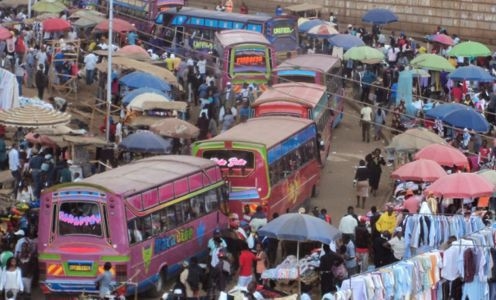In Nairobi, people hardly own cars. After the formal bus system seized to exist in the 1990s and the government has not taken steps to set up a new one, the Kenyan people themselves had to come up with a way to be transported from A to B (Anon, 2015). The answer: the Kenyan matatu.
It has become the most popular form of transportation. These mini buses that carry approximately 15-20 passengers fill up the streets of Nairobi. There are no official regulations for matatus: individual operators decide which routes, which fares, and which hours they make.
What is even more interesting about matatus is that it is the norm to customize them, to make them attractive to the public. With so many matatu operators present and no regulation to ensure fair competition, the way to attract customers is by “pimping” the car. The vans come in a range of different colors, often spray-painted, with stereo installations, loud music, colored seats and more recently even sometimes with WiFi on board.
Even though these rides can be a fun experience, they do not come without a certain risk. Matatu drivers are among the most reckless and dangerous drivers in the city. The matatu industry is characterized by the countless road accidents, its lawlessness, poor conditions for workers, fluctuating fares, and cartels (Wambururu 2015). These traits indicate a need for more government intervention to at least make this form of transport safer and more regulated.
Until that happens, matatus are still a major economy booster. This form of informal employment creates many direct and indirect jobs to thousands of Kenyans (Wambururu 2015). It stimulates people to set up their own matatu companies, but also insurance companies, mechanics, and spare parts dealers.
References:
Anon. 2015. “How we mapped the world’s weirdest streets.” Medium. Accessed October 29, 2015. Available from: https://medium.com/@transitapp/hello-nairobi-cc27bb5a73b7#.tfu4lr2jl
Wambururu. 2015. “Matatus: Kenyan mode of public transport vehicles.” Blog post. Accessed October 29, 2015. Available from: https://wambururu.wordpress.com
